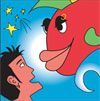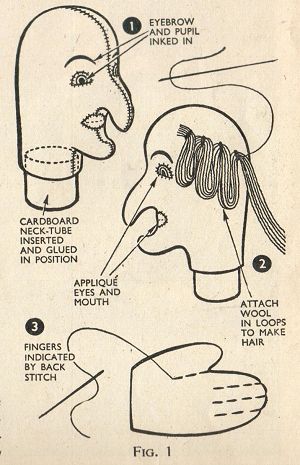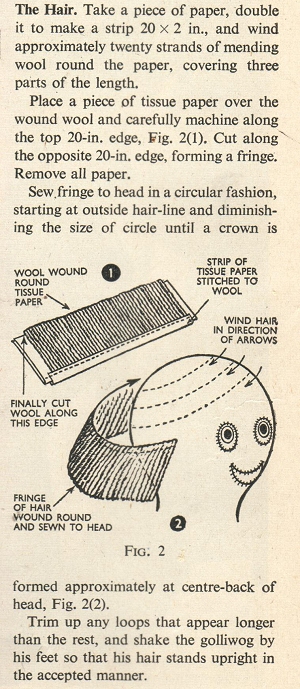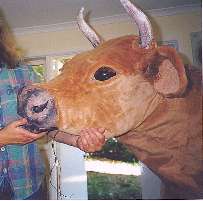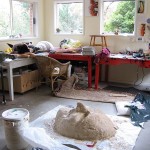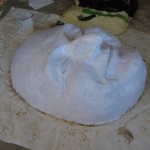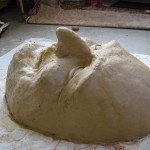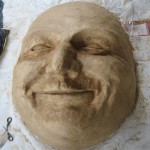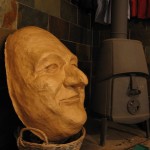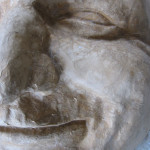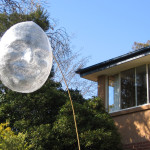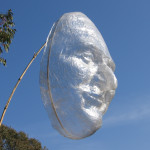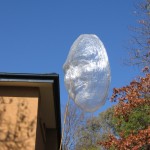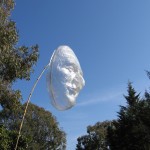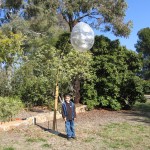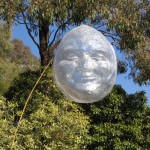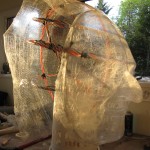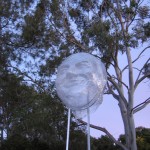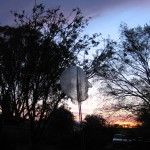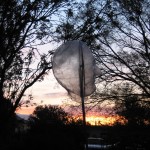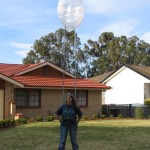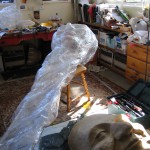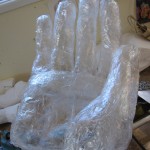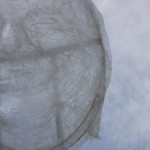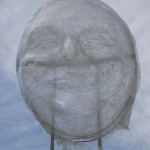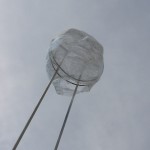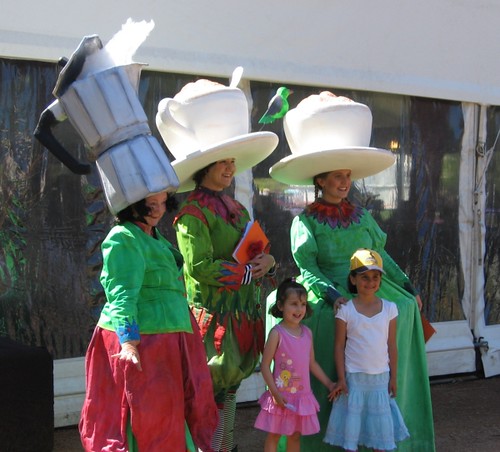
Making these fun hats was another of my Floriade projects. I enjoyed making them and was really happy with how they turned out. They were made for the performance group The Bunch of Posers, who in this guise are called Acappellacino.
To make them I started out by making the cup shape upside down, with a mixture of a garden pot and a garden hanging basket and clay. I started paper mache-ing it, but realised that the edges were going to curl when they dried, so instead I made a pattern from the shape (you put alfoil over it, masking tape it so it stays in the shape, then cut it into sections so
it becomes a 2D flat pattern). I could have made a small model and done the same and scaled it up if I hadn’t started down the paper mache track to begin with. Once I had the pattern, I cut it out of a particular thin dense type of foam sheeting and glued it up into the cup shape.
The top cup rim and the foam is made from a circle of polystyrene, so it gives the foam rigidity at the top. The saucer is slightly thicker foam, and the rim of the saucer is a ring of a kind of tubular insulation foam that the building trade uses (its called PEF backing rod, and its like those lengths of foam kids play with in swimming pools – pool noodles they are called here. But you can buy it in different diameters if you know where to go for building supplies.) The ring gave the saucer a nice rigidity. You can see the cups in the raw making phase in this picture.
Then it has muslin spray-glued on to the foam to give it a protective surface and kind of bring it all together. Then paint, with a bit of latex added to make it stick well.
The coffee pot was made in much the same way, just from foam. I made a pattern straight from my neighbour’s espresso pot and scaled it up (what I should have done with the cup, too!). However it does have a ring of light aluminium flat bar in the top rim and a couple of aluminium bars from the ring up into the lid to make the open lid possible and strong. The steam is dacron, the wadding stuff they put in quilts, with a wire through it.
The coffee cups just sit on your head like sombreros, but the coffee pot needed a chin stap which I filched from a bike helmet.
Here’s a video of the group in action, singing “You’re the Cream in my Coffee’. On my computer the sound only streams smoothly once its played through once.

(Click on the photo)
